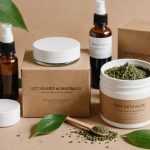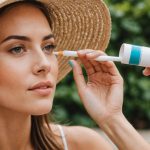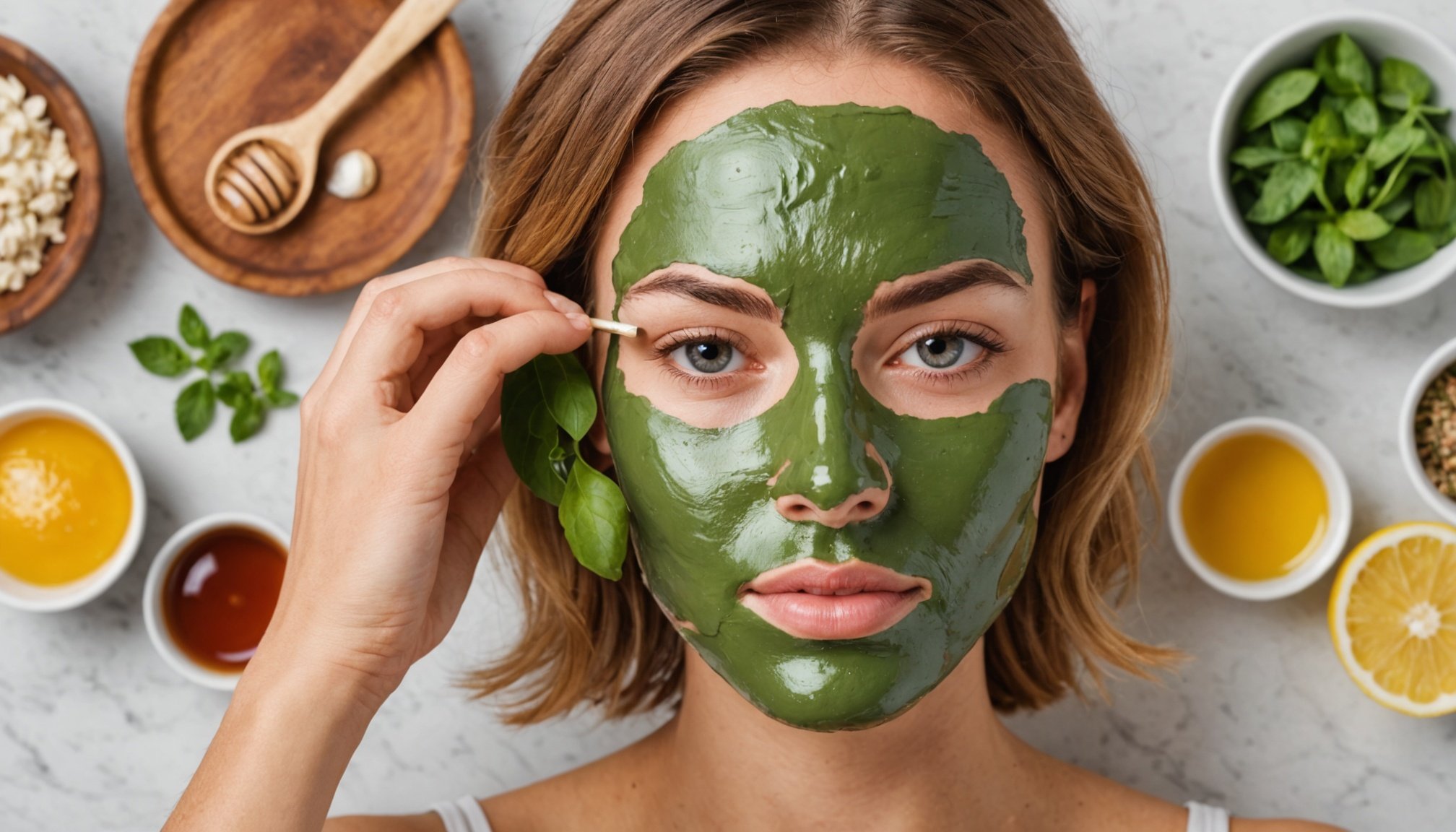Understanding Oily Skin
Oily skin is a commonly misunderstood skin type characterized by excess production of sebum, the skin’s natural oil. This overproduction often leads to issues such as shiny appearance, enlarged pores, and frequent breakouts. Understanding the causes of oily skin is crucial for embracing effective skincare basics.
Several factors contribute to increased oil production. Genetics is a primary influence, meaning if your parents had oily skin, you might too. Hormonal changes, such as puberty or pregnancy, can also amp up sebum production. Environmental factors, such as high humidity and heat, often exacerbate oily skin, prompting the glands to secrete more oil.
Topic to read : Transform Your Heart Health and Sculpt Muscles with These Dynamic Workouts
Targeted skincare for oily skin is essential in managing these characteristics. The use of non-comedogenic products ensures pores remain unclogged. Regular cleansing helps maintain a balance, preventing excess oil and promoting a clearer complexion. Tailoring a skincare routine to focus on lightweight, water-based, or gel moisturizers can help mitigate the oily sheen without compromising on hydration. Understanding the interplay of these elements aids in devising a beneficial regimen, catering specifically to the unique needs of oily skin.
Understanding Oily Skin
Oily skin is characterised by an increased production of sebum, resulting in a shiny or greasy appearance. This type of skin can lead to unwanted issues like acne and enlarged pores. The causes of oily skin vary immensely, encompassing both genetic factors and external influences. For example, hormone levels, particularly during puberty or pregnancy, often contribute to heightened oil production.
Also to discover : The Ultimate Guide: Expert Techniques for Sunscreen Application Beneath Makeup to Maximize UV Protection!
Understanding your skin type, especially if it tends towards being oily, is crucial in selecting appropriate skincare remedies. Certain skincare basics are essential in managing oily skin. A consistent routine, focused on products that minimise oil yet provide necessary moisture, can help maintain balance.
Targeted skincare for oily skin often includes using oil-free cleansers and non-comedogenic products to prevent clogged pores. Proper skincare basics should incorporate ingredients like salicylic acid that reduce oil without stripping the skin’s essential moisture. Moreover, maintaining a balanced diet, staying hydrated, and managing stress levels can significantly aid in controlling excess oil production. By adopting a suitable skincare regimen, individuals can effectively manage their oily skin and minimise related skin issues.
Benefits of DIY Face Masks
DIY beauty presents numerous advantages, particularly when using household ingredients for your natural skincare routine. One significant benefit is the ability to create cost-effective skincare solutions right from your kitchen, allowing access to fresh, unprocessed materials that maintain their natural properties. Unlike commercial face masks that may sometimes contain synthetic substances, DIY versions offer transparency in ingredient selection, granting you control over what touches your skin.
Incorporating items like honey or yogurt, which are readily available in most kitchens, can provide nourishing and rejuvenating effects due to their natural skincare properties. Another advantage is the ability to customize masks according to individual skin needs. For instance, if you struggle with oily skin, integrating lemon juice for its citrus astringent properties can help regulate sebum levels.
Customising gives you an opportunity to explore and adjust, creating a skincare regimen that is as unique as your skin type. Thus, DIY beauty is not only about simplifying your skincare routine but also about personalising it to achieve optimal results.
Benefits of DIY Face Masks
DIY beauty is rapidly gaining popularity due to its accessible and cost-effective skincare solutions. Household ingredients yield numerous advantages, combining natural skincare benefits with financial savings. Using common items like honey or oatmeal for face masks not only personalises the experience but also utilises ingredients that are generally gentler on the skin compared to some commercial products. For those with specific skin needs, DIY face masks provide a level of customisation that commercial products might lack.
Moreover, creating skincare at home reduces exposure to synthetic additives often found in retail skincare solutions. This approach leverages the therapeutic properties of natural ingredients, aiding in specific skin concerns like excess oil production. Homemade masks can be tailored to balance sebum without sacrificing moisture.
For example, honey is known for its antibacterial properties, making it a great fit for acne-prone, oily skin. Yogurt’s lactic acid helps exfoliate and tighten pores, while oatmeal can absorb excess oil and soothe the skin. Embracing the flexibility of DIY skincare encourages individuals to experiment and adjust masks to evolve with their skin’s changing needs.
Safety Considerations and Allergies
When exploring DIY beauty for your skincare routine, it’s vital to prioritize skincare safety. Not all ingredients in your kitchen are suitable for every skin type; thus, patch testing is paramount. Apply a small quantity of a new ingredient to your forearm or behind your ear and wait 24-48 hours to check for any adverse reactions. This practice protects against unexpected sensitivities, enhancing the safety of your natural skincare regimen.
Common potential allergens you might find in your skincare ingredients include citrus fruits, nuts, or dairy products. An adverse reaction could manifest as redness, itching, or a rash. If you notice any unusual symptoms, discontinue use immediately.
For those with sensitive or reactive skin, what’s beneficial for others might not be suitable. It’s wise to look for ingredients known for gentler interactions like oatmeal or aloe vera for their calming properties. Consulting a dermatologist can also help identify which natural remedies might be most compatible with your specific needs. Prioritizing safety ensures that your DIY beauty experience remains enriching and beneficial, aligning with your skin’s unique characteristics.
Essential Kitchen Ingredients for Face Masks
Incorporating kitchen staples into your skincare regimen presents an affordable and natural way to treat oily skin. Many household ingredients possess properties that effectively address skincare needs. Honey, for example, is a natural humectant with antibacterial properties, making it ideal for soothing acne-prone, oily skin. It helps lock in moisture without adding excess oil.
Yogurt contains lactic acid, which gently exfoliates and tightens pores. This can assist in managing oil production, showcasing its multifaceted benefits. Oatmeal is another versatile ingredient; it is particularly beneficial for its ability to absorb excess oil while providing a soothing effect on irritated skin. Rich in antioxidants, it supports overall skin health.
Selecting the right skincare ingredients relies on understanding your unique skin needs. Those targeting oil reduction might lean towards citrus-based elements, which can act as natural astringents. However, it’s crucial to adjust and experiment with ingredient combinations to tailor masks to specific conditions and changing skin requirements. By leveraging these natural remedies, individuals can craft personalized and effective skincare treatments from the convenience of their pantry.
User Testimonials and Results
Through various compelling skincare testimonials, individuals have shared their positive experiences with DIY masks. Users often highlight significant improvements, especially in managing excess oil and refining pores. For instance, a user with persistent oily skin reported a noticeable reduction in shine and breakouts after consistently applying a yogurt and lemon face mask. This particular treatment leverages yogurt’s lactic acid for gentle exfoliation while the lemon helps control oil levels.
Before-and-after photos presented by many DIY beauty enthusiasts visually depict the effectiveness of these natural remedies, showing improved texture and reduced oiliness. Engaging with user testimonials fosters a sense of community, where individuals can share results and tips, enhancing mutual learning and encouragement.
Community involvement often propels individuals to try new recipes, tailored to their varied skin types and needs. Feedback on platforms dedicated to natural skincare reveals that shared experiences and knowledge exchange strengthen the quest for healthier skin. This collaborative environment illustrates not only the potential of DIY beauty but also the empowerment found in self-care regimens crafted from everyday ingredients.
Recipes for DIY Face Masks
Creating your own DIY face masks is an engaging way to address oily skin concerns with homemade masks. Below are detailed recipes for different skin treatments using readily available ingredients.
Honey and Oatmeal Mask
Benefits: This mask serves oily skin by soothing inflammation and absorbing excess oil.
Instructions:
- Mix 1 tablespoon of honey with 2 tablespoons of oatmeal.
- Spread the mixture evenly across your face.
- Let it sit for 15 minutes, then rinse with warm water.
Frequency: Use twice a week for optimal results.
Yogurt and Lemon Face Mask
Benefits: The combination brightens skin and controls oil production effectively.
Instructions:
- Combine 2 tablespoons of yogurt with 1 teaspoon of lemon juice.
- Apply gently over the face, avoiding the eye area.
- Leave for 10 minutes, then rinse thoroughly.
Safety: Perform a patch test for citrus sensitivity before full application.
Avocado and Aloe Vera Blend
Benefits: This blend hydrates while controlling oil, perfect for balanced skin care.
Instructions:
- Mash ½ ripe avocado and mix with 1 tablespoon of aloe vera gel.
- Apply generously across the face.
- Let it sit for 10-15 minutes before rinsing.
Tips: For added effectiveness, use after steaming your face to open pores.
Recipes for DIY Face Masks
Creating homemade masks provides an avenue for personalised skin treatment that caters to specific needs. Here’s a look at three effective recipes:
Honey and Oatmeal Mask
This mask is ideal for soothing and calming oily skin. Honey acts as a natural humectant and antibacterial agent, while oatmeal absorbs excess sebum. Mix 1 tablespoon of honey with 2 tablespoons of ground oatmeal. Apply the mixture evenly on the face, leaving it on for 15-20 minutes. Use lukewarm water for removal. Use it 1-2 times weekly for best results.
Yogurt and Lemon Face Mask
For those aiming to brighten skin and control excess oil, this mask combines yogurt’s exfoliating lactic acid with lemon’s astringent properties. Combine 2 tablespoons of yogurt with 1 teaspoon of lemon juice. Apply carefully, avoiding sensitive areas. Rinse off after 10 minutes, ensuring there are no signs of irritation. Avoid sunlight immediately after application due to citrus ingredients.
Avocado and Aloe Vera Blend
Hydration and oil balance come from blending half an avocado with a tablespoon of aloe vera gel. Apply the mixture to the face, allowing the mask to sit for 15 minutes. It nourishes the skin while controlling oil production. Use once a week for optimal hydration.
Application Tips for DIY Masks
Enhancing your skincare application methods can notably improve the efficacy of DIY face masks. Before applying a mask, it’s vital to cleanse your skin thoroughly. This ensures that the ingredients can penetrate the surface more effectively, offering optimal benefits. Consider using a gentle cleanser suitable for your skin type, especially if it’s oily, to avoid adding extra oil.
Once your skin is clean, gently pat it dry before applying the mask evenly across your face. Use your fingertips or a soft brush for application to avoid transferring bacteria from your hands. Follow the mask’s instructions regarding specific application areas and avoid the sensitive eye region.
For removing homemade masks, rinse with lukewarm water, and gently pat your skin dry with a soft towel. Excessive scrubbing can irritate the skin, especially if it’s acne-prone or sensitive. Finally, follow up with a lightweight moisturiser to lock in the hydration and keep the skin balanced.
The duration for keeping the masks on varies, but generally, 10-15 minutes is ideal for most facial treatment suggestions. This time allows the ingredients to work effectively without causing skin tightness or irritation.











